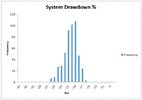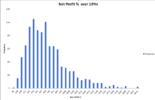Hi All,
I have attached the strategy backtest report from Amibroker for a monthly strategy I am working on.
Whilst the results look promising, I wanted to get feedback on the stats, where you see issues.
I am concerned about the Monte carlo analysis.
I donot fully understand on how to interpret Monte carlo analysis results. But i do see a lot of zeroes in there
So, would like some help from the experienced. Is it a risk to trade this system as is?
PS: I had to attach the report in zip format as HTML attachments are not accepted. Let me know if you are concerned with opening zip files. I will attach image files.
Regards,
Hari
I have attached the strategy backtest report from Amibroker for a monthly strategy I am working on.
Whilst the results look promising, I wanted to get feedback on the stats, where you see issues.
I am concerned about the Monte carlo analysis.
I donot fully understand on how to interpret Monte carlo analysis results. But i do see a lot of zeroes in there
So, would like some help from the experienced. Is it a risk to trade this system as is?
PS: I had to attach the report in zip format as HTML attachments are not accepted. Let me know if you are concerned with opening zip files. I will attach image files.
Regards,
Hari




